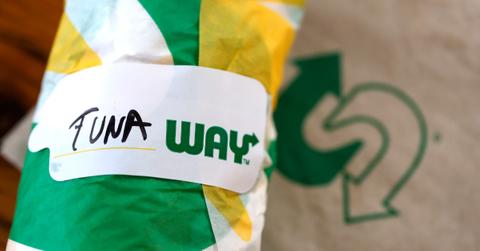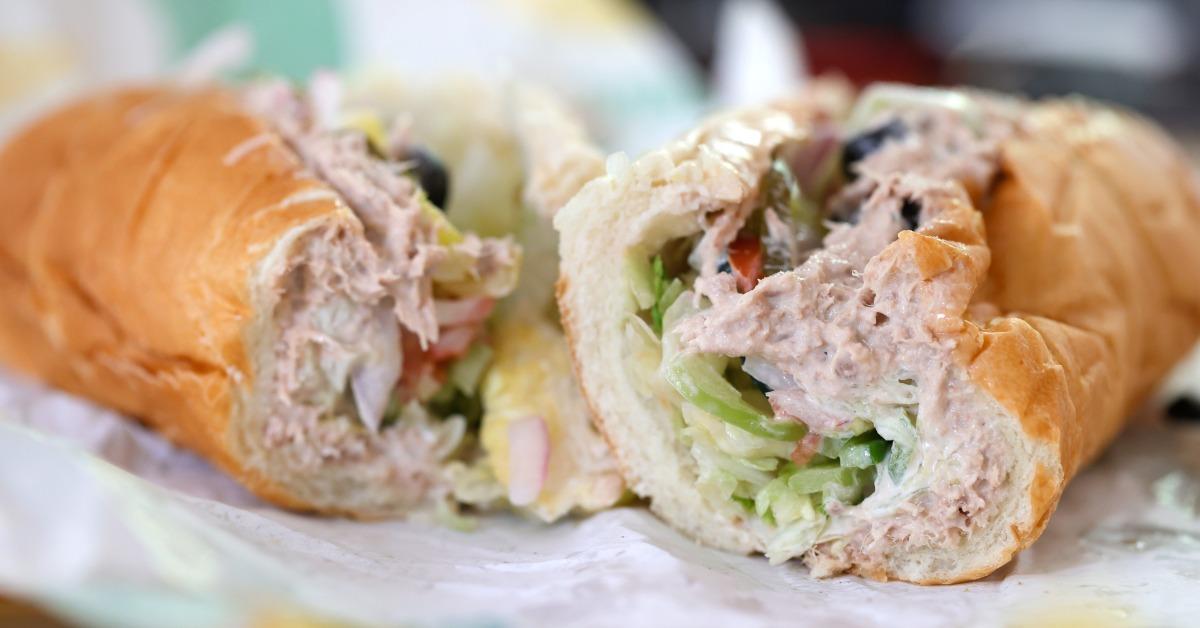Subway Is (Once Again) Being Hit With Claims That Its "Tuna" Isn't Actually Tuna
Published June 23 2021, 2:46 p.m. ET

Seeing as it's a national chain with a presence in virtually every major population area, it's hard to go too far without seeing the Subway logo. Their quick and cheap sandwich options are a go-to for millions of people every day, but new details are emerging about what exactly might be within those sandwiches, and it's not what you think.
The central focus of this controversy is Subway's tuna, which is, well, seemingly not exactly "tuna" at all despite being sold as such. So, what is Subway's "tuna" actually made of, and how can the company get away with calling it something that it isn't? Keep reading to find out.

So then what exactly is Subway's "tuna" made of? It doesn't seem to be what it claims to be.
In a massive exposé spearheaded by The New York Times, a general study was done to find out if Subway's tuna is what the chain claims it to be — 100 percent real wild-caught fish. The publication went and purchased three different Subway tuna sandwiches from three different locations in the Los Angeles area as well as acquiring some frozen samples of the product. These were all sent to an independent lab for testing to determine their DNA composition.
The test concluded what many suspected: There was no trace of tuna DNA in Subway's "tuna."
According to the Times — which claims to have spent $500 on the independent tests — multiple PCR reports, which check specifically for DNA, found zero traces of actual tuna within the samples.
"No amplifiable tuna DNA was present in the sample," the lab report concluded, "and so we obtained no amplification products from the DNA."

So, what exactly is Subway's "tuna" made out of? Well, nobody is 100 percent sure (yet), and reports claim it could be a myriad of things. A lab representative from where the test was done said that there are likely two scenarios: "One, it’s so heavily processed that whatever we could pull out, we couldn’t make an identification. Or we got some and there’s just nothing there that’s tuna."
Nonetheless, the representative wasn't able to confirm what the substance may be if actually not tuna at all.
This investigation by the newspaper comes on the heels of a January 2021 lawsuit filed against Subway by individual patrons who claim that the company is falsely advertising its "tuna" as such.
That initial lawsuit claimed that the "tuna" is "made from a mixture of various concoctions that do not constitute tuna, yet have been blended together by defendants to imitate the appearance of tuna."
Subway has denied the allegations, telling The New York Times in an email, "There simply is no truth to the allegations in the complaint that was filed in California."
In February, Inside Edition conducted its own investigation which did indeed find tuna in the samples it had sent to a lab.
Stay tuned to Distractify for more details surrounding the studies being conducted on Subway's tuna as they emerge.